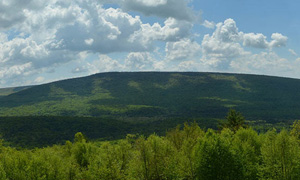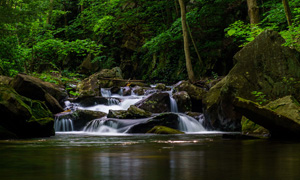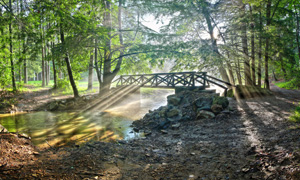
Earth Science week is October 8-14, 2023
Each October, educators, community groups, organizations and citizens of Pennsylvania and across the globe celebrate Earth Science Week.
What is Earth Science Week?
Earth Science Week (ESW) is a national and international celebration organized by the American Geosciences Institute (AGI). This annual celebration promotes stewardship of the Earth and a greater public understanding of the vital role of the Earth sciences. Each year, AGI chooses a theme for ESW that gives a focal point for national and local events. This year’s theme is “Geoscience Innovating for Earth and People,” highlighting how innovations in the geosciences are aiding in solving earth and environmental problems at the global scale while also helping communities live healthier and more sustainable lives locally.
Geoscience and Innovation in Pennsylvania
From ancient oceans to majestic mountains, volcanoes to glaciers, Pennsylvania’s had them all! Here at the Pennsylvania Geological Survey it is our job to unravel Pennsylvania’s geologic past to create a more sustainable future.
Have you ever wondered about the rocks beneath your feet? Or about the cool geologic features you may encounter on hikes, driving by road cuts, or just looking out your window? The Pennsylvania Geological Survey has dedicated field mappers whose job it is to map the rocks you stand on and the outstanding geologic features that you see. These maps are the foundation for many kinds of work from geologic research to policymaking.

A section of landscape at the top of Pole Steeple in Michaux State Forest shows the layers of rock. Photo by S. O. Reese
Water quality impacts everything from your drinking water to the delicate ecosystems within and around our Pennsylvania’s beautiful streams, rivers, and lakes. Our hydrogeologists study how water moves across and through Earth’s crust.
Sinkholes and landslides are among the most common geohazards in the state. Our applied geologists are responsible for mapping these hazards and studying their triggers so that builders, engineers, and homeowners can make informed decisions when it comes to construction planning.
Oil & gas, coal, and ore reserves are an important part of our state’s history and future. Our subsurface geology group is responsible for mapping out where these resources are found as well as studying the CO2 sequestration potential of Pennsylvania’s deeply buried rocks to ensure a positive legacy for generations to come.
Finally, our Geologic and Geographic Information Services (GGIS) Division takes all the awesome research and data collected by our talented staff and creates colorful maps and informative publications that you can download and explore for free via our interactive web-portal, PaGEODE. But that’s not all they do, the GGIS staff also fly drones, develop cutting-edge geospatial models, and manage approximately 100,000 feet of scientific drill core.
Ways to Learn and Participate in Earth Science Week
There are several ways to participate in Earth Science Week in Pennsylvania. The simplest way is to search for Earth Science Week events online and participate in an event near you. However, if you’re up for an adventure, you can go check out one of Pennsylvania’s 30 outstanding geologic features.
Written By Stacey Daniels, Grant & Outreach Coordinator & Kyle Rybacki, Geoscience Manager, Geologic Mapping Division at the Pennsylvania Geological Survey
Image Sources:
Reese, S. O., 2016, Outstanding geologic feature of Pennsylvania—Colton Point, Tioga County: Pennsylvania Geological Survey, 4th ser., Trail of Geology 16–040.0, 1 p. [Available online.]
Reese, S. O., 2016, Outstanding geologic feature of Pennsylvania—Pole Steeple, Cumberland County: Pennsylvania Geological Survey, 4th ser., Trail of Geology 16–090.0, 1 p. [Available online.]




